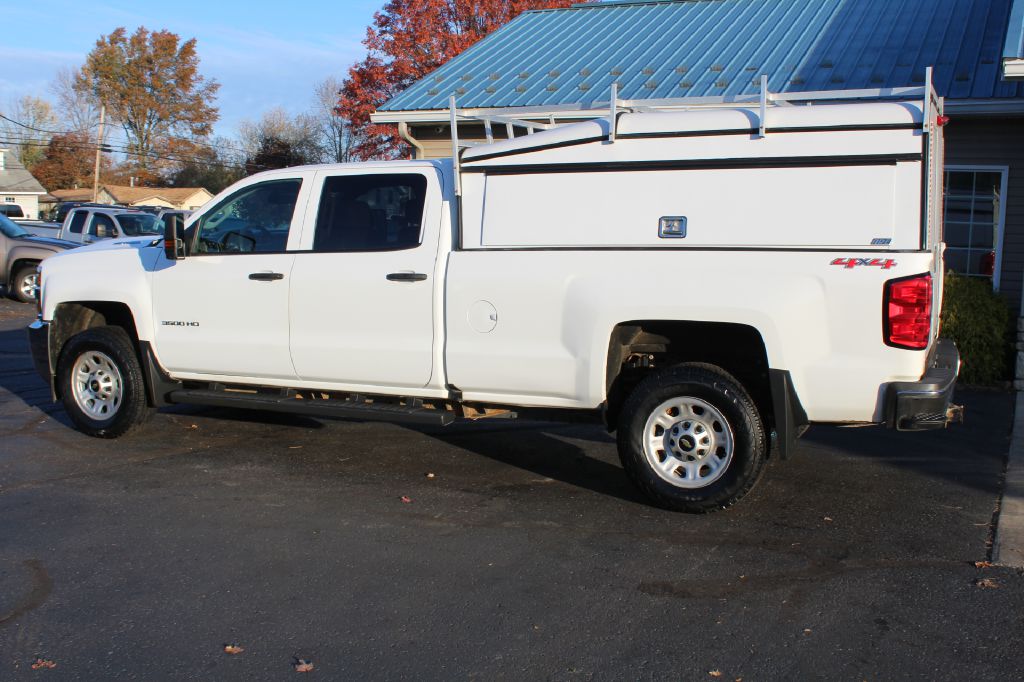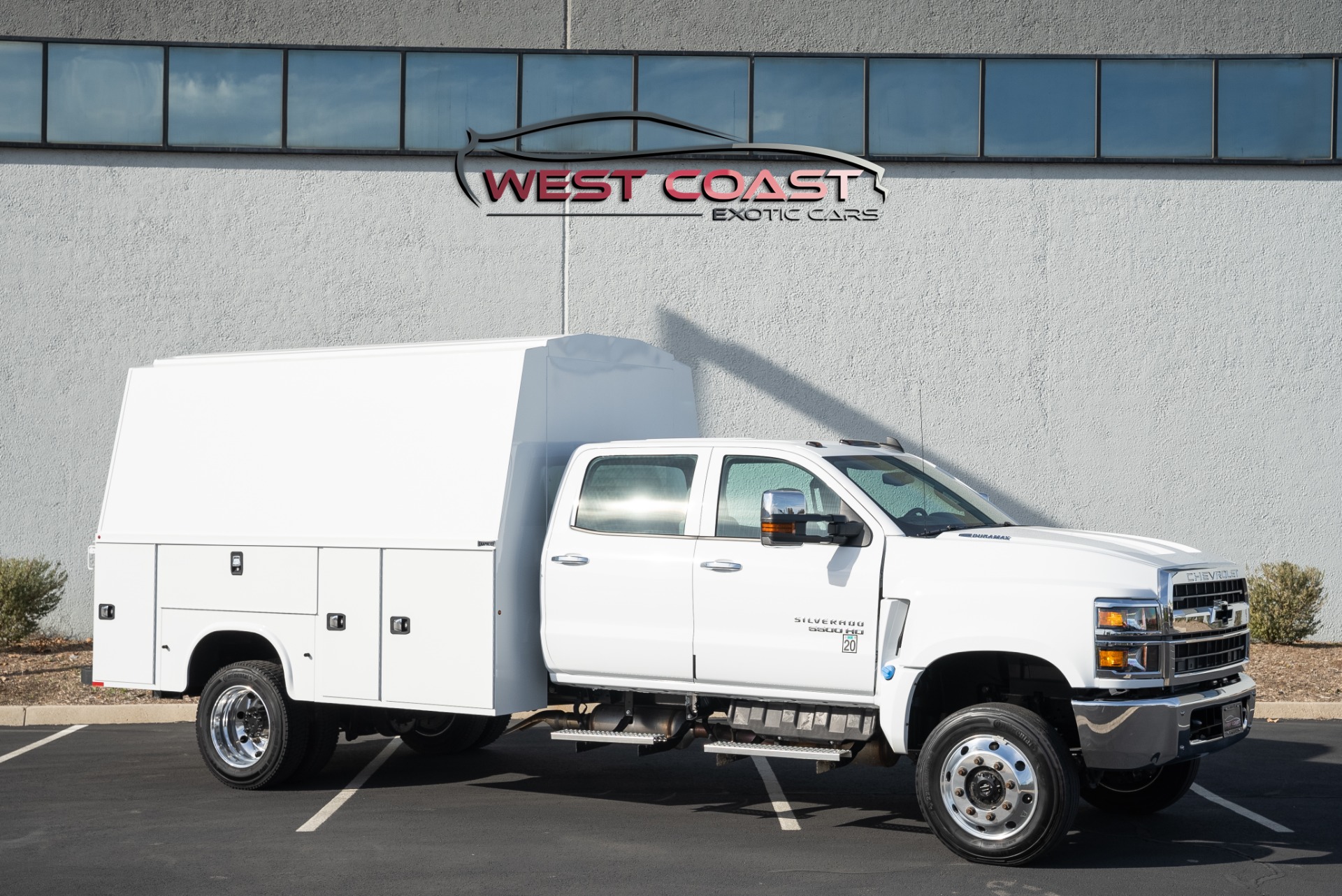The Unsung Workhorses: Navigating the Market for Used 4×4 Work Trucks

The Unsung Workhorses: Navigating the Market for Used 4×4 Work Trucks
In the bustling world of commerce, construction, agriculture, and outdoor adventure, a reliable vehicle isn’t just a convenience – it’s a foundational tool. For many, the ultimate solution comes in the form of a 4×4 work truck. These rugged machines are built to tackle the toughest jobs, traverse challenging terrain, and haul heavy loads, embodying the very spirit of utility and resilience. While the allure of a brand-new, shiny truck is undeniable, the savvy buyer often turns their gaze to the robust and surprisingly diverse market of used 4×4 work trucks. This article delves deep into why used 4×4 work trucks represent an unparalleled value proposition, what to look for when buying one, and how to ensure you drive away with a true workhorse that will serve you faithfully for years to come.
The Irresistible Appeal of Used Work Trucks
The decision to purchase a used 4×4 work truck is often driven by a combination of practicality, economics, and a keen understanding of automotive depreciation. Here’s why opting for a pre-owned model makes so much sense:
- Significant Cost Savings: This is, arguably, the most compelling reason. New trucks, especially 4×4 models equipped for heavy duty, command hefty price tags. A used truck, even just a few years old, can be thousands, even tens of thousands, of dollars cheaper. The steepest depreciation occurs in the first few years of a vehicle’s life; by buying used, you let the first owner absorb that financial hit.
- Proven Reliability: While it might seem counterintuitive, a used truck that has demonstrated its ability to perform over several years often offers a clearer picture of its long-term reliability than a brand-new model. Online reviews, owner forums, and maintenance records can provide invaluable insights into common issues or strengths of specific models and model years.
- Immediate Availability: Unlike ordering a new truck with potentially long lead times for specific configurations, the used market offers a vast inventory of trucks ready for immediate purchase and deployment.
- Lower Insurance and Registration Costs: Generally, older and less expensive vehicles incur lower insurance premiums and sometimes reduced registration fees, adding to the overall long-term savings.
- Less Worry About Dings and Scratches: A work truck is meant to work, and that often involves exposure to harsh environments. With a used truck, the initial anxiety about the first scratch or dent is often already behind you, allowing you to focus on its utility rather than its pristine appearance.
Why 4×4 is Non-Negotiable for a Work Truck
The "4×4" in 4×4 work truck isn’t just a luxury feature; for many applications, it’s an absolute necessity.
- Unparalleled Traction: Whether navigating muddy construction sites, snow-covered roads, sandy beaches for coastal work, or uneven terrain on a farm, four-wheel drive provides the grip needed to maintain momentum and control. This is crucial for safety and efficiency, preventing costly delays or even accidents.
- Access to Remote Job Sites: Many professional tasks require access to areas not served by paved roads. Surveyors, utility workers, forestry professionals, and rural contractors rely on 4×4 capability to reach their destinations.
- Enhanced Towing and Hauling Stability: While a 2WD truck can tow, 4×4 provides superior stability and traction, especially when launching boats, pulling trailers up inclines, or navigating slippery ramps. The added weight distribution and traction can prevent wheel spin and ensure a safer, more controlled tow.
- Resale Value: 4×4 trucks generally hold their value better than their 2WD counterparts, especially in regions with challenging weather or diverse terrain.
Defining the "Work Truck"
When we talk about "work trucks," we’re generally referring to vehicles designed primarily for utility, durability, and capability, often prioritizing function over luxury. Key characteristics include:
- Robust Powertrains: Often equipped with powerful V8 gasoline engines or high-torque diesel engines, designed for sustained heavy loads and towing.
- Heavy-Duty Suspension and Frame: Built to withstand the stresses of carrying significant payloads and enduring rough roads.
- Practical Interiors: While modern work trucks offer more comfort than ever, many used models will feature durable, easy-to-clean materials, and a focus on functionality (e.g., ample storage, practical dash layouts).
- Payload and Towing Capacities: These are critical metrics, defining how much the truck can carry in its bed and how much it can pull behind it. Used trucks can range from light-duty (e.g., F-150, Silverado 1500) to heavy-duty (e.g., F-250/350, Silverado/Sierra 2500/3500, Ram 2500/3500).
- Cab Configurations: Used work trucks come in various cab styles:
- Regular Cab: Two doors, seating for two or three, longest beds for a given wheelbase. Ideal for maximum bed space and maneuverability.
- Extended Cab (SuperCab, Double Cab): Two full-size front doors, two smaller rear doors, and a small rear seating area. Offers some passenger space and interior storage.
- Crew Cab (SuperCrew, CrewMax, Mega Cab): Four full-size doors and ample rear seating. Popular for crews or families, though often paired with shorter beds.
The Comprehensive Checklist: What to Look For Before You Buy
Purchasing a used 4×4 work truck requires a meticulous approach. Unlike a passenger car, a work truck often has a harder life, making a thorough inspection paramount.
1. Budgeting Beyond the Sticker Price
Your budget needs to account for more than just the purchase price.
- Taxes and Fees: Sales tax, registration, title fees.
- Insurance: Get quotes before buying.
- Maintenance: Factor in immediate post-purchase maintenance (fluids, filters, tires) and ongoing costs.
- Potential Repairs: Set aside a contingency fund for unexpected issues.
- Upfitting: Do you need a bed liner, toolbox, ladder rack, or custom service body? Factor these costs in.
2. Condition Assessment: The Nitty-Gritty Inspection
This is where you earn your savings. Bring a flashlight, a magnet (to check for body filler), and even a mechanic if you’re not confident.
-
Exterior and Body:
- Rust: This is the biggest enemy of a used work truck. Inspect the frame (especially critical), rocker panels, wheel wells, bed supports, cab corners, and door bottoms. Surface rust is manageable, but extensive frame rust can be a deal-breaker.
- Dents and Scratches: Minor cosmetic blemishes are expected, but look for signs of major collision repair (uneven panel gaps, mismatched paint).
- Tires: Check tread depth and evenness of wear. Mismatched tires or severe uneven wear can indicate alignment issues or suspension problems.
- Glass: Look for cracks or chips in the windshield and windows.
- Lights: Ensure all exterior lights (headlights, tail lights, brake lights, turn signals) are functional.
-
Under the Hood (Engine Bay):
- Fluid Leaks: Look for drips or stains under the truck and on engine components (oil, coolant, transmission fluid, power steering fluid).
- Belts and Hoses: Check for cracks, fraying, or bulges.
- Battery: Look for corrosion on the terminals.
- Overall Cleanliness: A very clean engine bay can sometimes hide leaks, but a neglected one often signifies poor maintenance.
- Listen to the Engine: On a cold start, listen for knocking, ticking, or excessive smoke from the exhaust.
-
Interior:
- Wear and Tear: Seats, floor mats, steering wheel, and pedals will show wear. Excessive wear for the mileage could indicate harder use or higher actual mileage.
- Electronics: Test everything: radio, AC/heat, power windows, locks, mirrors, cruise control, dashboard lights.
- Warning Lights: Ensure no check engine light, ABS light, or airbag light is illuminated.
- Smell: A musty smell could indicate water leaks; a strong chemical smell could be a cover-up.
-
Undercarriage and Drivetrain:
- Frame: Re-emphasizing this – check for cracks, bends, or severe rust.
- Suspension Components: Look for worn bushings, cracked control arms, leaking shocks or struts.
- Driveshafts and U-joints: Check for play or rust.
- Differentials and Transfer Case: Look for fluid leaks. Ensure the 4×4 system engages smoothly (more on this during the test drive).
- Exhaust System: Check for rust, holes, or loose components.
3. The All-Important History Check
Never skip these steps:
- Vehicle History Report (VIN Check): Services like CarFax or AutoCheck are invaluable. They can reveal:
- Accident History: Major collisions can lead to long-term issues.
- Title Status: Look for salvage, flood, rebuilt, or branded titles, which often indicate significant past damage and can make insurance difficult.
- Odometer Rollback: Ensures the mileage is accurate.
- Service Records: Some reports include maintenance history.
- Number of Owners: More owners can sometimes mean less consistent care.
- Maintenance Records: Ask the seller for any service records. A well-documented history of oil changes, fluid flushes, and major component replacements is a huge plus.
- Previous Usage: Was it a personal truck, a fleet vehicle, or used for heavy commercial purposes? Fleet vehicles might have high mileage but often come with diligent maintenance records.
4. The Test Drive: Your Personal Performance Review
This is your chance to feel how the truck operates.
- Cold Start: Start the truck from cold. Listen for abnormal noises (ticking, knocking) or excessive smoke from the exhaust.
- Engine Performance: Accelerate smoothly and aggressively. Listen for hesitation, misfires, or strange noises.
- Transmission: Check for smooth shifts, both up and down. Listen for clunking or slipping.
- Brakes: Test the brakes at various speeds. Listen for grinding, squealing, or pulsation. Ensure the truck stops straight without pulling.
- Steering: Check for excessive play in the steering wheel, pulling to one side, or unusual noises during turns.
- Suspension: Drive over bumps and uneven surfaces. Listen for creaks, groans, or excessive bouncing.
- Engage 4×4: Find a safe, appropriate area (like a dirt path or empty lot) to engage the 4×4 system in both high and low ranges. Listen for clunks, grinding, or inability to engage. Ensure the indicator light comes on. Test it in a tight turn to feel the bind that typically occurs in 4WD on hard surfaces (don’t do this for long on pavement).
- Listen for Wind/Road Noise: Excessive noise could indicate poor seals or underlying issues.
5. Professional Pre-Purchase Inspection (PPI): Non-Negotiable
Even if you’re mechanically inclined, a professional inspection by an independent mechanic is the single best investment you can make. They have specialized tools, lifts, and expertise to spot issues you might miss. A PPI can uncover hidden problems, give you leverage for negotiation, or save you from buying a costly lemon.
Where to Find Your Next Workhorse
The market for used 4×4 work trucks is vast and varied:
- Dealerships (New and Used):
- Pros: Often offer reconditioned vehicles, financing options, and sometimes limited warranties. Larger selection.
- Cons: Higher prices due to overhead and reconditioning costs.
- Private Sellers:
- Pros: Often the lowest prices, direct negotiation with the owner, and you can ask detailed questions about the truck’s history and quirks.
- Cons: "As-is" sales, no recourse if issues arise, less selection, and you’re responsible for all paperwork.
- Online Marketplaces (e.g., Craigslist, Facebook Marketplace, Autotrader, Cars.com):
- Pros: Immense selection, easy to filter by criteria, competitive pricing.
- Cons: Requires careful vetting of sellers, susceptible to scams, often private sellers.
- Commercial Fleet Sales/Auctions:
- Pros: Often well-maintained vehicles (though with high mileage), significant discounts.
- Cons: Vehicles may have been worked hard, limited opportunity for thorough inspection at auctions, often sold "as-is."
- Government Auctions:
- Pros: Can find specialized vehicles, potentially good deals.
- Cons: Very specific conditions, often "as-is," limited information.
Popular Used 4×4 Work Truck Models (Examples)
While specific recommendations depend on individual needs, certain models have consistently proven their mettle in the used work truck market:
- Ford F-Series (F-150, F-250, F-350): Perennially the best-selling trucks, known for their powerful engines (EcoBoost, V8 gas, Power Stroke diesel), wide range of configurations, and robust capabilities. The Super Duty models (F-250/350) are legendary for heavy towing and hauling.
- Chevrolet Silverado / GMC Sierra (1500, 2500HD, 3500HD): GM’s offerings are celebrated for their comfortable rides, reliable V8 engines (gas and Duramax diesel), and durable build quality. The HD models are serious contenders for heavy-duty work.
- Ram (1500, 2500, 3500): Known for their comfortable coil-spring rear suspension (1500), powerful Hemi V8s, and the legendary Cummins diesel engine in the heavy-duty models. Ram work trucks offer a blend of comfort and capability.
- Toyota Tundra / Tacoma: While often associated with recreational use, Toyota trucks are renowned for their exceptional reliability and longevity, making them excellent choices for work, especially in lighter-duty applications (Tacoma) or where bulletproof dependability is paramount (Tundra).
- Nissan Titan / Frontier: Often overlooked, these trucks can offer excellent value on the used market. The Titan offers V8 power, while the Frontier is a capable mid-size option.
Maximizing Your Investment: Post-Purchase Tips
Once you’ve found and purchased your used 4×4 work truck, a few immediate steps can help ensure its longevity and reliability:
- Immediate Maintenance: Even if the seller provided records, it’s wise to perform a full fluid and filter change (oil, transmission, differential, transfer case, coolant, air filter, fuel filter if diesel). This establishes a baseline for your own maintenance schedule.
- Address Minor Issues: Fix any small issues identified during the inspection promptly. Small problems can quickly become big, expensive ones.
- Rust Prevention: If you live in a rust-prone area, consider getting the undercarriage professionally rust-proofed or applying a good undercoating.
- Familiarize Yourself: Read the owner’s manual (you can often find PDFs online if it’s missing) to understand your truck’s specific features, maintenance schedule, and capabilities.
- Upfit as Needed: Install bed liners, toolboxes, ladder racks, or other accessories to tailor the truck to your specific work needs.
Conclusion
The market for used 4×4 work trucks is a goldmine for those seeking robust, reliable, and capable vehicles without the hefty price tag of a new model. By understanding the inherent value proposition, knowing precisely what to inspect, leveraging comprehensive history checks, and performing a diligent test drive, you can confidently navigate this segment. A pre-purchase inspection by a trusted mechanic remains the ultimate safeguard. With the right research and a methodical approach, you won’t just buy a used truck; you’ll invest in a proven workhorse that will be an invaluable asset to your business, your adventures, and your daily life for years to come.

